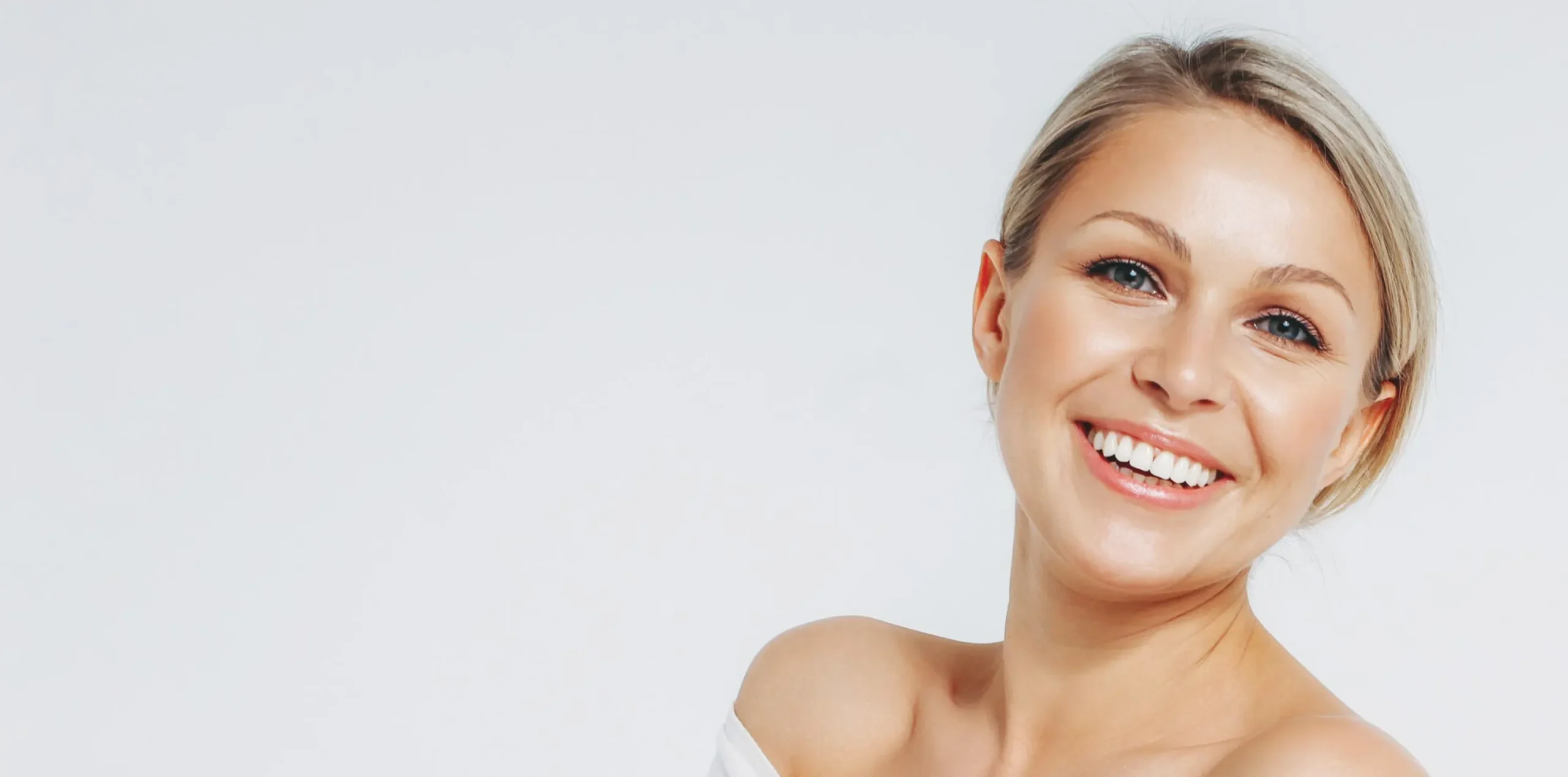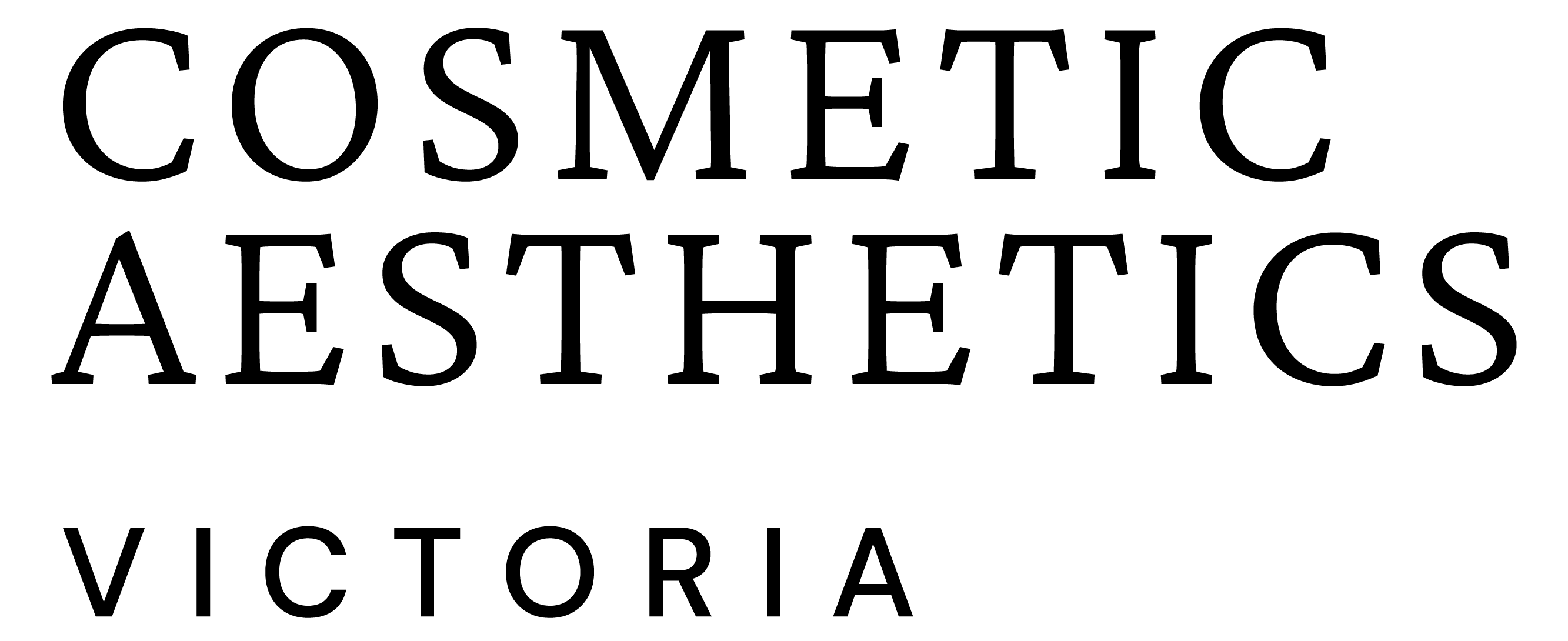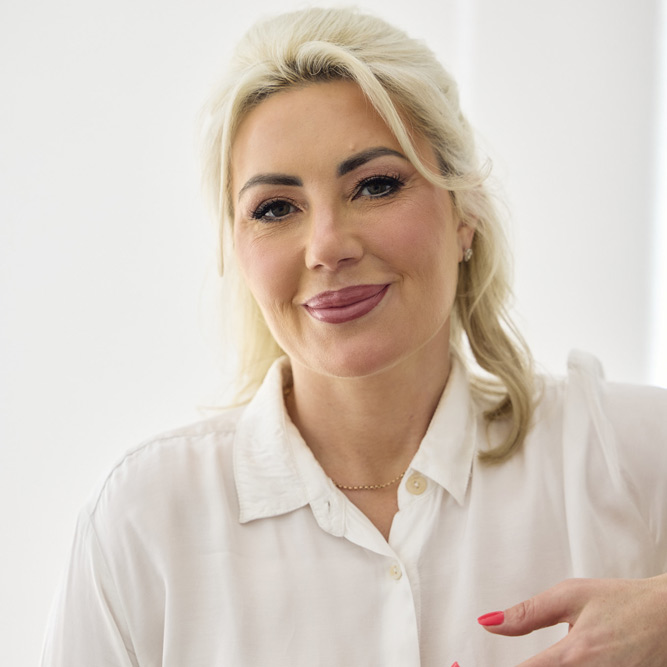
Everything You Need To Know About LED Light Therapy And Skin Treatments
LED (Light Emitting Diode) light therapy has been making waves in skincare for years, but its roots might surprise you—NASA originally developed it for plant growth experiments. They found certain light wavelengths could stimulate healing and regeneration in plant cells, and soon the skincare industry saw its potential for human skin.
At first, I was sceptical. The idea that coloured light could improve skin sounded far-fetched. But after trying it, the results spoke for themselves. LED therapy uses low-level light (photobiomodulation or PBM) to energise mitochondria—cells that fuel skin repair—helping skin heal and rejuvenate more efficiently.
I first used it with a client struggling with acne and early ageing. We combined red and blue light, and within weeks, her acne scars faded and fine lines softened—no harsh chemicals or invasive treatments, just light.
Unlike UV-based treatments, LED therapy is safe and non-damaging. That’s a huge win for anyone wanting healthier skin without the risks of UV exposure.
So, if you’re considering LED light therapy, you’re not alone. With strong science behind it and growing popularity in Australia, it’s a go-to for treating acne, signs of ageing, and more, naturally and effectively.
Curious how it works and which colours to use? Let’s dive in.
How LED Light Therapy Works: A Deep Dive Into Wavelengths And Skin Benefits

LED light therapy is not just a passing trend in the skincare industry; it’s a scientifically backed treatment that uses specific wavelengths of light to promote various skin benefits. But how exactly does it work?
When I first encountered LED light therapy, I was curious to understand how different wavelengths could affect the skin in such a targeted way. After diving into the science behind it, I found that it’s all about the depth of penetration and the biological processes that light stimulates. Different colours of light target different layers of the skin, making it a versatile treatment for a variety of concerns.
Here’s how each colour plays a part in rejuvenating your skin:
Red Light Therapy
Red light (typically wavelengths between 600 and 700 nm) is one of the most popular choices in skin care, and for good reason. This light penetrates into the dermis (the deeper layer of the skin) and helps stimulate the production of collagen and elastin. These are the proteins responsible for skin elasticity and strength. In a treatment I did recently, I used red light to help a client with fine lines and sagging skin. Over several weeks, we noticed an improvement in skin tone and texture—her skin felt firmer, and those pesky fine lines started to fade. Red light therapy is particularly effective for anti-aging, and it’s often used in combination with other treatments for a more comprehensive skin rejuvenation.
Blue Light Therapy
Blue light (around 415 to 460 nm) is known for its ability to target acne-causing bacteria, making it a go-to treatment for anyone dealing with breakouts. The light works by penetrating the outer layer of skin, targeting the bacteria responsible for acne (Propionibacterium acnes). I’ve had clients who struggled with persistent acne, and incorporating blue light therapy into their treatments really helped clear up the inflammation and reduce the number of pimples. Plus, it helps regulate sebum production, reducing that oily shine we all want to avoid. That being said, blue light isn’t a one-size-fits-all fix; it’s more effective for mild to moderate acne and can be combined with red light therapy for better overall results.
Green Light Therapy
This one is often overlooked, but it shouldn’t be. Green light (around 520 nm) is particularly effective for hyperpigmentation, such as age spots, melasma, or dark patches caused by sun exposure. This was a game-changer for me when I started treating a client who had struggled with sunspots for years. By using green light therapy, we could break down melanin clusters and reduce those stubborn dark spots. It’s a fantastic option for anyone looking to even out skin tone. Green light can also have a calming effect on the skin, reducing redness and irritation, which is why it’s often included in treatments for conditions like rosacea.
Yellow And Infrared Light
Yellow light (around 590 nm) has a soothing effect, helping reduce redness and inflammation. It’s also been used for healing purposes, particularly post-procedure or after laser treatments. On the other hand, near-infrared light (830–850 nm) goes even deeper, targeting muscles and joints to help with pain relief and muscle recovery. This type of therapy has been gaining popularity in the treatment of chronic pain and for enhancing recovery after intense physical activity. I’ve personally used near-infrared light to treat muscle soreness after a few intense workout sessions, and it worked wonders, reducing stiffness and speeding up recovery.
The Benefits Of LED Light Therapy For Skin: From Acne To Anti-Aging
When it comes to skin care, most of us are always on the lookout for something that really works. And after years of exploring different treatments, I can honestly say that LED light therapy has delivered some of the most impressive results. Here’s why:
1. Anti-Aging And Skin Rejuvenation
As I’ve seen firsthand, red light therapy is one of the most effective options for combating fine lines and wrinkles. Stimulating collagen production, it helps improve skin elasticity and texture. Think of it as giving your skin a little wake-up call. For clients who are noticing the early signs of aging, I recommend starting with a red light treatment to help tighten the skin and reduce those fine lines. In my experience, results start to show after a few weeks of consistent use, and it’s great for keeping the skin looking youthful without the need for injections or harsh chemicals.
2. Acne Treatment
Blue light therapy is a game-changer for anyone dealing with acne. I’ve worked with teenagers and adults alike who’ve struggled with breakouts, and blue light has consistently been effective at reducing inflammation and bacteria. One memorable case was with a client who had persistent acne around their chin. After about a month of blue light treatments combined with a tailored skincare routine, the client reported a significant reduction in both the number of pimples and the overall skin texture. Plus, blue light therapy has the added benefit of regulating sebum production, which prevents future breakouts.
3. Wound Healing And Hyperpigmentation
I’ve also witnessed remarkable results when using LED light therapy for healing purposes. Red and near-infrared light, in particular, promote tissue repair and circulation. One of my clients had recently undergone a minor skin resurfacing procedure and came in for LED therapy to speed up healing. After just a couple of sessions, the healing process seemed to accelerate, and the redness and scarring were visibly reduced. For clients with hyperpigmentation, green light has proven effective in targeting melanin, helping to fade dark spots and even out skin tone.
4. Collagen Production
LED light therapy isn’t just about anti-aging or acne treatment—it’s about keeping your skin healthy and vibrant. Red light stimulates collagen production, which is key to maintaining that youthful, plump look. I’ve seen clients who have used red light for several months and reported smoother, more resilient skin. The beauty of LED therapy is that it tackles skin concerns on a cellular level, ensuring long-lasting effects rather than just temporary fixes.
How To Choose The Best LED Light Device For Your Skin?
Choosing the right LED light device for your skin is essential for achieving the results you’re aiming for. Whether you’re looking to combat fine lines, tackle acne, or rejuvenate dull skin, the right device can make all the difference. But with so many options available—especially in today’s at-home skincare market—how do you know which one is right for you? Here’s a breakdown to guide you through the selection process, based on both personal experience and client feedback.
1. Understand Your Skin’s Needs And Goals
The first step in choosing a device is to clearly define your skincare goals. Are you looking to reduce fine lines, clear up acne, or fade dark spots? Each type of LED therapy works best for different skin concerns, so understanding what you want to achieve will help narrow your choices.
For example, red light therapy is best for anti-aging and collagen production, while blue light targets acne by killing the bacteria that cause breakouts. If your goal is to rejuvenate your skin and promote elasticity, red light will be your go-to. However, if acne is your main concern, look for a device with a good concentration of blue light to target oil and bacteria.
In my practice, I often help clients make this decision by asking what their primary concern is. Once they’ve identified their issue, it’s easier to choose the correct wavelength.
2. Look For A Device With The Right Wavelengths
The wavelength of light is crucial because it determines how deeply the light penetrates your skin and what it targets. Different skin concerns respond to different wavelengths, so understanding this is key to choosing the right device.
LED Light Therapy Wavelengths & Benefits
| Light Colour | Wavelength Range (nm) | Primary Benefits | Best For |
| Red Light | 600–700 nm | Stimulates collagen and elastin production, reduces fine lines and wrinkles | Anti-aging, skin firmness |
| Blue Light | 400–470 nm | Kills acne-causing bacteria (P. acnes), regulates oil production | Acne-prone skin, oily skin |
| Green Light | 495–570 nm | Targets melanin clusters to reduce pigmentation and brighten skin | Hyperpigmentation, uneven skin tone |
| Yellow Light | 590–620 nm | Reduces redness and inflammation, soothes skin, and improves skin texture | Sensitive or irritated skin, rosacea |
| Infrared Light | 700–1100 nm | Deep penetration for tissue repair, muscle recovery, and wound healing | Pain relief, inflammation, and post-procedure recovery |
I’ve always encouraged my clients to choose a device that offers multi-colour therapy, as it can treat a variety of issues simultaneously. A red and blue light combination, for instance, works well for individuals who have both acne and signs of aging.
3. Consider The Irradiance (Power Density) And Coverage Area
When it comes to LED devices, more isn’t always better. While a high irradiance (measured in mW/cm²) indicates stronger light intensity, it’s crucial to find a balance that suits your skin’s tolerance. Professional devices often have higher irradiance than home devices, meaning they deliver stronger results in a shorter amount of time. However, at-home devices are generally safer and more manageable, especially if you’re new to LED therapy.
Coverage area is another factor. If you’re looking to treat larger areas (like the entire face or neck), you’ll need a device with a larger treatment area. Masks or panel devices are great for covering your whole face in one go, while handheld wands are better suited for targeted treatments on specific spots, such as acne or fine lines.
When I first started recommending LED devices to my clients, I found that those with panel devices or masks were most satisfied with their coverage, as they could treat large sections of their face at once without the hassle of moving the device around too much.
4. Check For Approval And Safety Certifications
Safety should always be a top priority when choosing an LED light device. In Australia, look for devices that meet the Australian Therapeutic Goods Administration (TGA) standards or similar safety certifications, ensuring that the device is safe for use in your local area. This is crucial for avoiding potential risks like eye damage, skin irritation, or ineffective treatments.
5. User-Friendly Features And Design
When it comes to at-home devices, convenience matters; choose a device that fits well into your lifestyle. If you’re short on time, opt for a quick-use device, such as a handheld wand or mask that you can wear while watching TV or relaxing. Some devices offer adjustable settings, so you can tailor the treatment time and intensity based on your preferences.
Make sure the device is comfortable, easy to clean, and has clear instructions on how to use it properly. Built-in timers can be helpful to ensure you don’t overdo it and risk causing irritation.
Safety Precautions For LED Light Therapy Use

To ensure your sessions are as safe and effective as possible, here are a few general safety tips I always share with my clients:
- Always wear eye protection. Even though LED light therapy is safe for your skin, it can be too bright for your eyes. Use the protective goggles provided with the device or wear sunglasses to shield your eyes from the light.
- Start slow. Begin with shorter sessions and less frequent treatments if you’re new to LED therapy or have sensitive skin. Gradually increase the time and frequency based on your skin’s tolerance.
- Follow the manufacturer’s instructions. Different devices have different settings and recommended usage guidelines. Always follow the manufacturer’s instructions to avoid overuse or improper handling.
- Use sunscreen. After your LED therapy session, your skin may be more sensitive, so applying sunscreen is crucial to protect it from UV damage, especially if you’re using LED therapy to treat hyperpigmentation.
In-Office Vs. At-Home LED Devices: Which Option Is Best For You?
If you’re torn between in-office treatments and at-home devices, I can totally understand the dilemma. Here’s how I like to break it down based on personal experience and what I’ve seen with clients:
- In-Office Treatments: If you’re aiming for quick, dramatic results, professional treatments are your best bet. They typically offer more powerful devices and allow you to work with a professional who can tailor the treatment to your exact skin needs. You’ll get immediate effects, but the cost can add up over time if you’re committing to multiple sessions. If budget is not an issue and you want faster results, this is a great option.
- At-Home Devices: On the flip side, at-home LED devices offer convenience, affordability, and the flexibility to fit treatments into your schedule. Over time, they can be much more cost-effective, especially if you’re looking for ongoing maintenance. While results are usually slower and less intense than in-office treatments, consistent use will still give you noticeable improvements, especially if you’re focusing on anti-aging or acne prevention.
In my opinion, if you’re starting out or just want to maintain your skin’s health, at-home devices are a great investment. But for targeted treatments (like deep acne scarring or severe anti-aging), you might want to consider professional sessions to get the best results.
In summary, LED light therapy has a lot to offer. Whether you’re looking to reduce wrinkles, tackle acne, even out your skin tone, or simply rejuvenate your skin, this non-invasive treatment could be the solution you’ve been searching for. With its proven benefits, ease of use, and flexibility, it’s a tool that I highly recommend—whether you’re doing it at home or in a professional setting.
Remember, consistency is your ally in seeing long-term results, so stick with your routine, and don’t forget to protect your eyes during sessions. If you’re ever unsure, don’t hesitate to consult a dermatologist to find the best approach for your skin.
Now that you know more about Light Therapy or LED Skin Treatment, you might want to book an appointment and try out our Heallite LED Skin Rejuvenation. It’s ONLY $145 per session, and we’ll throw in a special offer. If you prepay for 6 sessions, you’ll receive a $217 OFF!
If you want to use our Heallite LED Skin Rejuvenation as a supplementary procedure to speed up recovery for a clear skin treatment, for example, all you need to do is just add $49 on top of the current treatment you’re paying for and you’ll be maximising the benefits of your treatment with Heallite!

